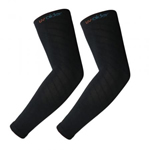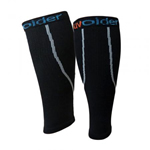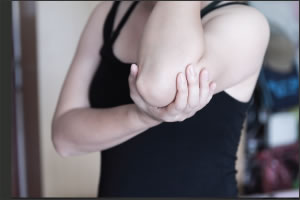Lymphedema is a medical condition that is caused by a blockage in the lymphatic system. This blockage prevents the flow of lymph fluid, a clear fluid that is carried toward the heart. Unable to properly flow, the lymph fluid builds up and causes swelling. There is no cure for lymphedema, but the swelling and discomfort can be treated using compression and physical therapy.
An Overview of Lymphedema
Lymphedema refers to a certain kind of swelling that can occur in your limbs. It can occur in one or both of your arms and/or one or both of your legs. There is no cure for lymphedema but the swelling and discomfort can be treated and managed.
Signs and Symptoms of Lymphedema
When your arm or leg is affected by lymphedema, certain signs and symptoms of the condition may start to appear, including:
- Noticeable swelling
- A noticeable feeling of heaviness or tightness in the affected limb or limbs
- Aches and pains
- Recurring skin infections
- Fibrosis (hardening and thickening of the skin)
Cases of lymphedema can range from mild to severe. In mild cases, minor swelling, tingling, shooting pains, reduced flexibility of joints and redness of skin may occur. In severe cases of lymphedema, it can be difficult to use the affected limbs and swelling can extend to your fingers and toes.
Causes of Lymphedema
Causes of lymphedema include:
- Genetic disorder
- Damage or removal of lymph nodes during surgery
- Having multiple surgeries to the chest
- Radiation and chemotherapy
- Infection of the lymph nodes
Risk Factors
Certain factors may increase your risk of developing lymphedema:
- Older age
- Rheumatoid arthritis
- Excess weight or obesity
- Having injuries and infections
- Flying on airplanes, especially long flights
Treating Lymphedema
Lymphedema cannot be cured, but it can be treated to reduce swelling, pain, and discomfort and to prevent lymphedema from getting worse. Options to treat lymphedema include:
- Exercise – Gentle muscle movement and flexibility and stretching exercises wearing compression sleeves to help lymph fluid circulation
- Wrapping – Use a graduated wrap to the affected limb, tightest at the extremities and looser toward your body, to encourage lymph fluid to flow toward the heart
- Massage – Special therapy massage called manual lymph drainage to facilitate the flow of lymph fluid
- Pneumatic compression – A special sleeve connected to a pump that creates pressure on the limb to encourage lymph fluid to flow
- Compression sleeves – Compression sleeves that can be worn at any time and especially during exercise that encourage the flow of lymph fluid
- Surgery – Removal of excess tissue in your arms or legs to reduce swelling
What You Should Do
As with any medical condition, you should regularly see your doctor and follow your doctor’s orders. Take your lymphedema condition seriously; don’t just cope with it or ignore it. Make the effort and take the time to treat your lymphedema. Keep swollen limbs elevated, regularly perform your lymphedema exercises, and wear compression sleeves.
For More Information on Lymphedema
National Library of Medicine – Lymphedema
Mayo Foundation for Medical Education and Research – Lymphedema
WebMD – What is Lymphedema?
American Cancer Society – What is Cancer-related Lymphedema?
Uvoider Compression Arm Sleeves and Calf Sleeves (15-20 mmHg and 20-30 mmHg)
Uvoider UV Compression Arm Sleeves – More Support™ Series (15-20 mmHg and 20-30 mmHg)

Uvoider UV Compression Calf Sleeves – More Support™ Series (15-20 mmHg and 20-30 mmHg


